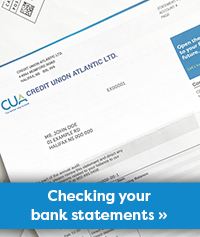Setting Financial Goals

Whether you are just setting out on your financial journey, looking to reevaluate your long-term plans or adjusting for new circumstances, it’s important to consider what your financial goals are. A survey conducted by Ipsos found that 67% of Canadians set financial goals in 2021, from saving for a house to planning for home repairs. At the same time, setting these goals has proven to inspire confidence. 75% of Canadians who set financial goals for themselves felt they were on track to meet them, according to the same study. Canadians throughout the country have recognized the power of setting financial goals. Whether you want to build an emergency fund, pay off student debt or save for retirement, working towards a specific purpose can help you stay on track with your finances.
Pinpointing your short-term, medium-term, and long-term goals is an essential first step in developing a holistic plan tailored to your specific financial situation. This can help you work towards being more financially secure and achieving your objectives. Although setting financial goals may seem like a daunting task at first, there are some simple steps that you can take to ensure that you are on the right path.
1. Think About What Is Important to You and Write It Down
Setting financial goals is an exercise in self-reflection. To know what you want to work towards financially, it’s important to reflect on what is most important to you and where you are in your financial journey. If your financial goals aren’t aligned with your values and ambitions, you will likely be less motivated to accomplish them.
Take a moment to consider what you most care about and what you envision for your life. Whether you dream of owning a home, putting your child through university, or spending your retirement travelling the world, your financial goals should help you work towards making your dreams a reality. Once you’ve pinpointed what you’re working towards, write it down as a reminder so that you can readjust your goals if your priorities or circumstances change.
2. Make Your Goals SMART
After you’ve identified your goals, it’s time to come up with a plan on how to achieve them. General goals such as simply saving more money or raising your credit score are difficult to measure and tend to be unclear when you’re just starting out, so it’s important to develop clearly defined criteria for what you want to achieve.
The SMART framework is a particularly successful model for coming up with attainable, actionable goals. A goal is SMART when it is specific, measurable, achievable, realistic, and time-framed.
If your goal is to develop an emergency fund, your SMART goal might look like the following:
-
Specific: You want to save $12,000 for an emergency fund.
-
Measurable: You plan to put aside $200 a month to contribute to the fund.
-
Achievable: When you take into account your monthly expenses, your disposable income allows you to contribute $200 a month to your emergency fund without impacting your ability to meet your other financial obligations.
-
Realistic: You can reasonably allocate $200 a month due to your income and expenses. Otherwise, you may need to adjust your goal.
-
Time-framed: You want to have $12,000 saved in five years.
3. Establish a Budget
Knowing how much you are spending each month and if all your expenses are necessary is an integral part of setting attainable financial goals. Creating a new budget or updating an old one can help you keep track of your progress, identify needless spending and feel more confident in your financial strategy.
To learn more about how to create a budget, visit one of our previous CUAuthors articles or download the CUA Monthly Budget Tracker.
4. Determine Whether Your Goals Are Short-Term, Medium-Term, or Long-Term
Knowing how far in advance you are planning for will influence what strategies you use for saving and investing. We can break down financial goals into three categories:
-
Short-term: (2 years or less): Creating an emergency fund, paying off credit card debt, saving for a trip or special occasion, or planning for a small home renovation.
-
Medium-term: (3 to 5 years): Buying a car, saving for a down payment on a home, taking a long or expensive vacation, or paying off debt.
-
Long-term: (6 years or more): Paying off student loans, saving for retirement, paying off a mortgage, beginning a business, or starting a tuition fund.
5. Be Persistent and Acknowledge Your Progress
There are many steps on the road to achieving financial goals and unexpected expenses are bound to happen. Although these can be frustrating, it’s important to acknowledge your progress and persevere. If you encounter a roadblock to your financial goal, consider reaching out to a trusted financial advisor to find a path forward.
CUA is devoted to helping members on their unique financial journey. Whether you are planning for the short-term, medium-term, or long-term, we offer a range of savings and investing options. To learn more about developing a plan to achieve your financial goal, schedule a call or meeting with one of our financial advisors.
Published Jan. 06, 2022






